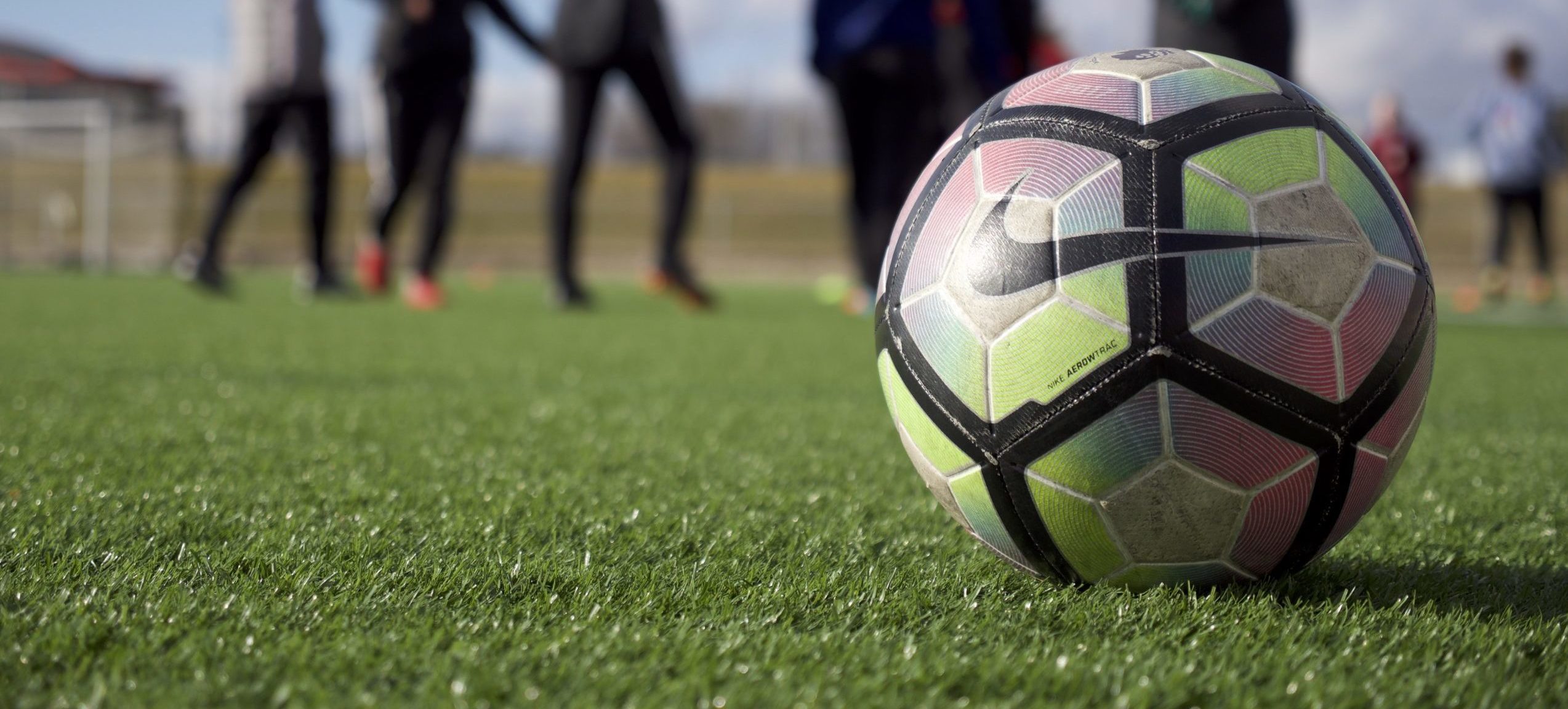Put away the Ladder and use the ball.

Many coaches are looking to improve the athleticism of their players as the modern game of soccer becomes increasingly faster, athletic, and competitive at younger and younger ages.
Coaches struggle with the limited amount of time they have to work with a team and often do not include proven injury prevention, speed, agility and quickness exercises into practice. If they do, an agility ladder, flags and hurdles are commonly used as tools to develop these desired characteristics.
More advanced coaches may make the agility exercise more “sport specific” by having a player negotiate an agility ladder, receive a pass, negotiate some hurdles, do a header, then weave through some flags and shoot a ball on goal. While this type of training is not harmful, it is not also that useful. And if a coach has a finite amount of time with his players, then game situations or the ball needs to be better connected to each activity.

The game of soccer is constantly flowing, changing and evolving. Unlike many other sports, there are not times to set and reset formations, run plays or predictable routes. So why would we expect to develop “agility” or “speed” through a predictable means when the application of that agility needs to be 100 percent reactive?
A great example is this: A defender is faced with an oncoming forward who has the ball and is looking to score. The defender will have to demonstrate “quickness” and “agility” in his movements in order to win the ball from the forward. The defender’s brain needs to process many pieces of information very quickly; what part of the field are we on, is the forward faster than me, have I been beaten before by this forward – if so with what moves, does the forward have supporting players, do I have supporting cover, is the forward right- or left-footed, etc.
Upon processing all this information in fractions of a second, the defender has to choose how to move or react, select the distance to keep in front of the forward, when to try to win the ball and where to direct the forward if possible. In this process the defenders feet are constantly moving, body position gets twisted, movement decisions are made and quickly changed all while keeping an eye on the ball. The natural footwork pattern exhibited here is sporadic, changing, dependent on many other variables, and unpredictable. An agility ladder trains none of these attributes, yet is the number one tool coaches and fitness professionals use to train agility.
Real agility involves reaction, using the brain to process many changing pieces of information, sporadic and varied movements, and game intelligence. We can train these characteristics in the form of a number of activities and small sided games that all involve the ball, teammates, thinking, field parameters, problem solving and are also much more fun for players.

Real agility is also integrated into many other aspects of the game and should not be treated as an isolated component. Agility development needs to be incorporated into technical skills, tactical understanding, psychologic loads and within the context of the whole game.
As Bob Gansler says, “Anything you do for its own sake is not very good.”
Agility for agility’s sake is not very good. These exercises are much better when soccer coaches or strength coaches think in soccer terms to train their players. To paraphrase renowned conditioning expert Raymond Verheijen, thinking in fitness terms lends itself to fitness tools and ultimately isolated training methods with a reduced connection to the real game.
In order for the strength and conditioning field to better contribute to the development of youth soccer players and in order for coaches to improve their time spent training players, the context of this training needs to be the game of soccer. And if we start there, we’ll see better neuromuscular activation, improved movement pattern execution, and improved neuromotor-cognitive processing … meaning improved ability to complete soccer skills, defend well, score goals, pass accurately and fewer injuries.
Be the first to comment